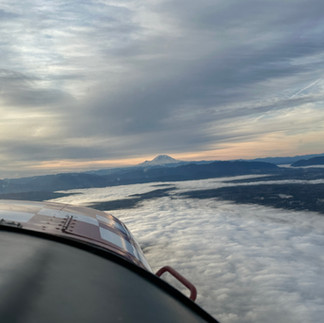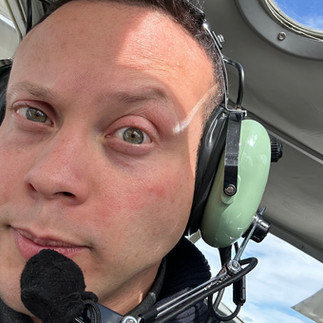Flight Planning for Life: How Pilots Prepare—and How You Can Too
- CFI Monty

- May 9
- 3 min read
Updated: May 9

In aviation, we don’t just jump into the cockpit and go flying. Every flight starts with a crucial step: preflight planning. According to FAA regulation 91.103, a pilot must become familiar with specific information before every flight. We use the acronym NWKRAFT as our checklist:
Notices to Air Missions
Weather
Known ATC Delays
Runway Lengths
Alternates Available
Fuel Requirements
Takeoff and Landing Distances
This isn’t busywork—it’s about knowing what you’re flying into. I’ve seen pilots skip this, only to discover they’re flying toward a closed runway or right into a temporary flight restriction. That kind of oversight can be dangerous.
Translate NWKRAFT Into Your Life
Recently, I joined a soccer team. On the days when we huddle before the match to talk strategy, we play like a team. But when we rush in without a plan? It’s disjointed and sloppy. The same applies to life and goal setting: you perform better when you plan with intention.
The U.S. Air Force defines leadership as “the art and science of influencing and directing people to accomplish the assigned mission.” There’s no mention of rank or title. Leadership is about influence, and that starts with how you lead yourself.
Whether you’re a student pilot, a rookie on a sports team, or just getting started in your career—your preparation sets the tone for others.
Mission Planning for Your Life Goals
Every day, I take a few minutes with a notebook to map out my objectives. Here’s how I break it down:
10-Year Vision: Big picture goals—Where do I want to be?
3–5 Year Milestones: What should I achieve to get there?
Quarterly & Monthly Goals: What targets will move the needle?
Weekly & Daily Tasks: What must get done today?
Let’s say my 10-year goal is to become an airline captain. Working backward:
In 3 years: I should be a flight instructor.
In 2 years: I need my commercial certificate.
In 1–2 years: I need to complete private and instrument training.
With that in mind, I look at the FAR/AIM or the Airman Certification Standards and identify the specific requirements I need to complete. Then, I make it a habit: study or practice something every day.
My Tools of the Trade
I currently use a Moleskine notebook with a camouflage outer cover—it holds two pens and has a rugged, tactical feel that fits my style.
Get the Notebook here (affiliate link)
Get the Book Cover here (affiliate link)
If you’re more into structured goal planners, I highly recommend:
BestSelf Journal – Great for setting 13-week sprints.
Full Focus Planner – Ideal for aligning daily tasks with your long-term vision.
(As an affiliate, I may earn a small commission if you choose to purchase through these links—it helps support this blog.)
And of course, every pilot should have:
A durable kneeboard to hold charts, checklists, and notes in the cockpit
A pilot logbook to track your training and progress
Start your flight training with the right tools—because preparation begins on the ground.
Lessons from the Battlefield
When I served in the Army, mission planning wasn’t just for commanders. Squad leaders planned routes, team leaders detailed tactical moves, and individual soldiers were expected to mentally rehearse their roles. Why?
Because even though “no plan survives first contact with the enemy,” a clear understanding of the commander’s intent empowers everyone to improvise intelligently when things go sideways.
The same is true for life: when you prepare with intent, you can adapt without losing direction.
Coming Soon: Flight Plan for Leadership
If this post resonated with you, you’ll want to check out my upcoming book, Flight Pan for Leadership. In it, I dive deeper into the mindset of preparation, lessons from aviation and the military, and how anyone—pilot, soldier, or entrepreneur—can lead with discipline, integrity, and clarity of mission.
Stay tuned for updates—and remember:
Through readiness and discipline, we are the masters of our fate.










Comments